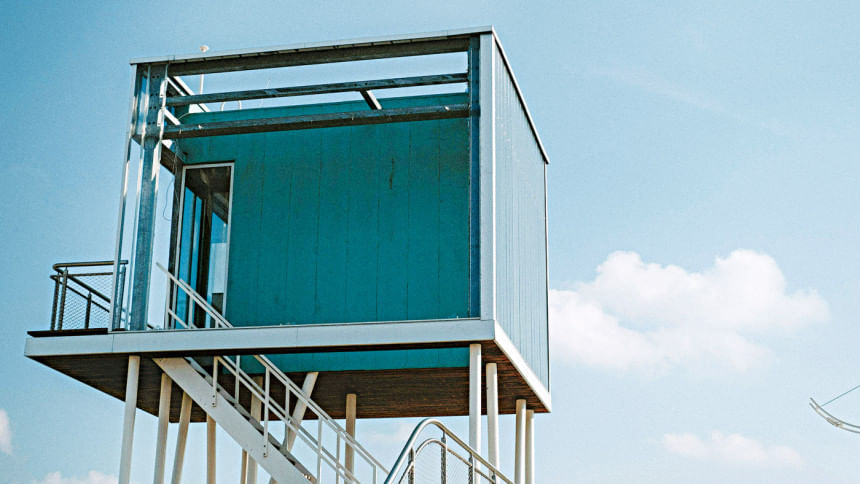Lego for grown-ups

Conventional construction methods traditionally require significant time and resources due to on-site processes and are often costly. In contrast, modular construction has emerged as a rapidly growing industry. According to Grand View Research, the global market is estimated at USD 103.55 billion in 2024 and is projected to reach USD 162.42 billion by 2030, growing at a CAGR of 7.9% from 2025 to 2030.
Building Faster, Smarter
Modular construction uses pre-built parts of the buildings or 'modules' to complete their projects by assembling the blocks on-site. The modules are designed and planned first, and are then built in a safe environment in dedicated factories. The modules are then transferred to the site and assembled according to the initial design by a crane and adjusted with structural reinforcements. This construction process is expedited by 20% to even 50% relative to conventional or on-site construction processes and saves approximately 20% of the costs. By creating a parallel workflow in the site and factories, modular construction can easily reduce construction time by half that of conventional construction. Also, repetitive design ensures perfection and precision.
From London to Tokyo: A History of Blocks
The very first instance of modular construction dates back to 1837, when a London carpenter, John Manning, built a prefabricated house in sections for his son, who was emigrating to Australia. Historically, modular construction has thrived in markets like the US and UK during housing shortages and labour crunches, particularly in post-war booms. Its popularity later declined due to safety concerns, such as the Ronan Point collapse in London, and negative public perception. Japan capitalised on high-volume production and a focus on quality, particularly for earthquake resistance. Meanwhile, Sweden adopted it to overcome climate constraints like short daylight hours and cold weather, which hinder traditional on-site building.
Today, this industry works as a suitable alternative to on-site construction, with residential housing like Boxabl Casita and Skanska Modular Apartments leading the competition. The global hotel chain, citizenM, employs this very construction process, offering an approach that is both efficient and affordable while maintaining a sense of luxury.
Worldwide Shift in Building
Modular construction thrives in markets where high housing demand intersects with scarce or expensive labour, conditions already proven in Japan and Scandinavia. Significant growth potential is now emerging in other key regions. Australia shows promise with high wages and unmet housing needs. Singapore's government is using modular techniques to build tens of thousands of units annually to accelerate construction. In the United Kingdom, rising labour costs are making modular products more competitive. The US West Coast is also seeing a shift, where a construction boom and soaring wages are attracting major investment from companies like Google, Amazon, and SoftBank.
Bangladesh: Still a Prototype Stage
In Bangladesh, modular construction is still in a very early stage. There is no proper example for using this construction process for any sort of residential or even commercial projects. The industry is currently led by companies specialising in pre-engineered steel buildings, such as ALM Steel Building Technology Ltd., MARN Steel Structure Ltd., Captains Group, Cactus Profiles, and Karmod.
A celebrated example is the Arcadia Education Project, an award-winning amphibious school designed by Saif Ul Haque. Its modular structure is a school which is designed to sit on the ground during dry periods and to float when the water rises again. Situated in South Kanarchor of Bangladesh, these chains of schools were made mainly from bamboo frames and steel drums to create buoyancy during water level rise.
Modular construction does provide a lot of advantages in the circumstances of the current century. Besides low cost and reduction of construction time, modular construction ensures that the quality of pre-built blocks is ensured in a factory-controlled environment. As it does not require on-site procedures, material waste is reduced by a significant 70% and it also ensures safety and flexibility of the labour workforce. Being less affected by weather or other site conditions, this construction ensures more predictable timelines and costs.
The Roadblocks
But even with these many pros, residential investors are still at times reluctant to join this industry. In many countries, the building regulation codes still lag in the case of modular construction, adding to the obstacles. On the other hand, clients and even developers still wrongfully perceive prefabricated buildings as 'temporary' or 'low quality' projects.
Looking Forward
With the rising demand of the housing sector, labour shortages, and need for rapid infrastructure, it would seem quite necessary to enrich the modular construction industry, as it provides a strategic solution compared to on-site construction. Modular construction represents an archetype shift in the building industry by offering much faster, safer, and cost-effective projects. Through overcoming the challenges that are now present, it will not be wrong to say that modular construction can shape the future of the building industry, edging out the conventional construction processes to create a sustainable environment.

 For all latest news, follow The Daily Star's Google News channel.
For all latest news, follow The Daily Star's Google News channel. 



Comments